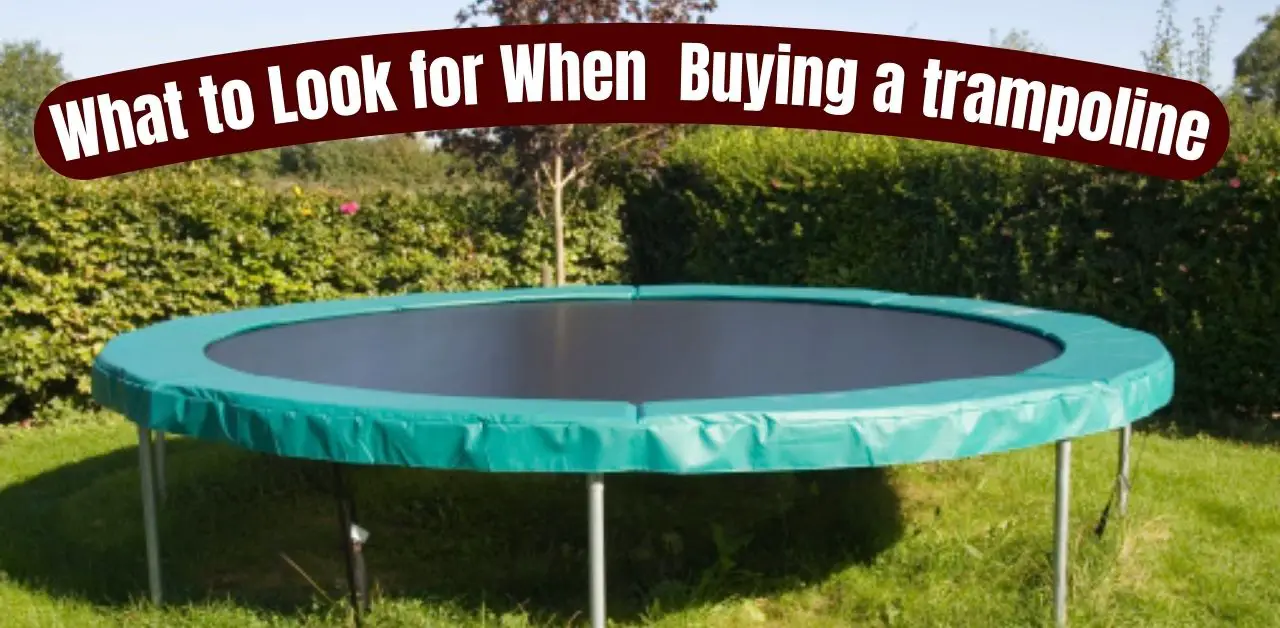If you want to know about what to look for when buying a trampoline? Trampolines are a great way to get some exercise and have fun at the same time, but buying one can be a daunting task. With so many options available, it’s hard to know what to look for. Whether you’re a first-time buyer or you’re replacing an old trampoline, it’s important to know what features to consider before making your purchase.
From size and shape to safety features and durability, there are several factors to keep in mind. In this guide, we’ll take a closer look at what to look for when buying a trampoline.
By the end, you’ll have a better understanding of what to consider when choosing the perfect trampoline for you and your family.
What to look for when buying a trampoline: Before buying a trampoline, consider factors such as the age and skill level of the jumpers, size and shape of the trampoline, safety features, durability, and maintenance requirements. Keeping these factors in mind will help you choose the perfect trampoline for your needs and budget.
What to Look for When Buying a Trampoline?
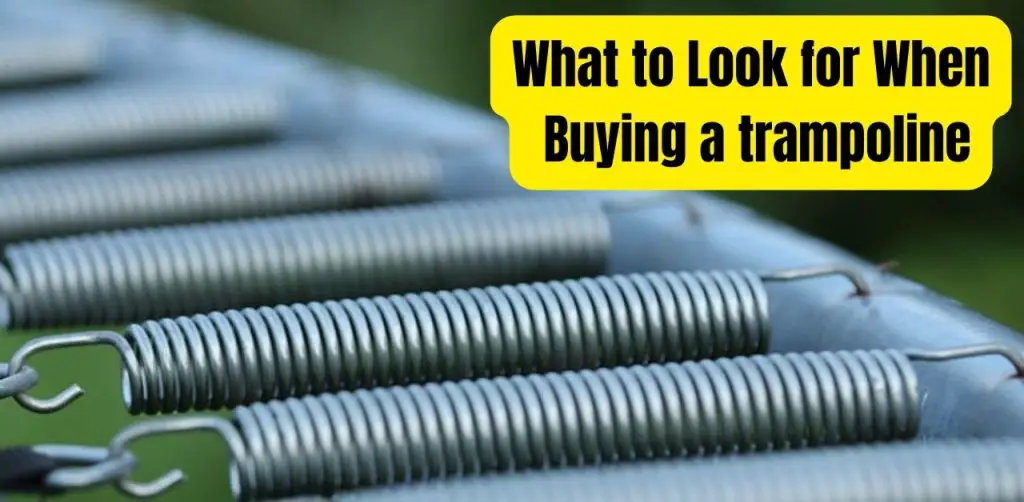
Trampolines are a fun and exciting addition to any backyard, but when it comes to purchasing one, there are several important factors to consider. Here are some things to look for when buying a trampoline:
Factors to Consider Before Buying a Trampoline
Trampolines are a popular form of entertainment and exercise for children and adults alike. They provide a fun way to burn off energy and get some exercise, but before you rush out and buy one, there are several factors that you need to consider.
Age of the Jumpers:
The age of the jumpers is one of the most important factors to consider before buying a trampoline. Younger children require more supervision and a smaller trampoline, while older children and adults can use larger trampolines with more advanced features.
For younger children, a smaller trampoline with safety features such as safety nets and padding is recommended. This will ensure that they are safe while jumping and reduce the risk of injury.
For older children and adults, larger trampolines with more advanced features such as a higher weight limit and more springs may be preferred.
Skill level of the Jumpers:
The skill level of the jumpers is another important factor to consider. If the jumpers are beginners, a smaller trampoline with a lower weight limit and fewer springs may be more appropriate.
As they progress, they may want to upgrade to a larger trampoline with more springs and a higher weight limit.
It’s also important to consider the type of activities that the jumpers will be doing on the trampoline. If they will be doing flips and other advanced tricks, a larger trampoline with more springs and a higher weight limit is recommended.
Size of the Trampoline:
The size of the trampoline is another important factor to consider. Trampolines come in a variety of sizes, from small 8-foot models to large 16-foot models. The size you choose will depend on the available space in your yard and the number of jumpers who will be using the trampoline.
If you have a small yard or only one or two jumpers, a smaller trampoline may be sufficient. However, if you have a larger yard and multiple jumpers, a larger trampoline may be more appropriate.
Shape of the Trampoline:
Trampolines come in a variety of shapes, including round, rectangular, and square. Round trampolines are the most common, but rectangular and square trampolines are becoming increasingly popular.
Round trampolines are great for beginners and younger children, while rectangular and square trampolines are better for advanced jumpers who want to do more advanced tricks.
In-Ground vs. Above Ground Trampolines:
Trampolines can be either in-ground or above ground. In-ground trampolines are more expensive and require more installation work, but they are safer and look better in your yard. Above ground trampolines are more affordable and easier to install, but they are not as safe and can be an eyesore in your yard.
Springless vs. Traditional Trampolines:
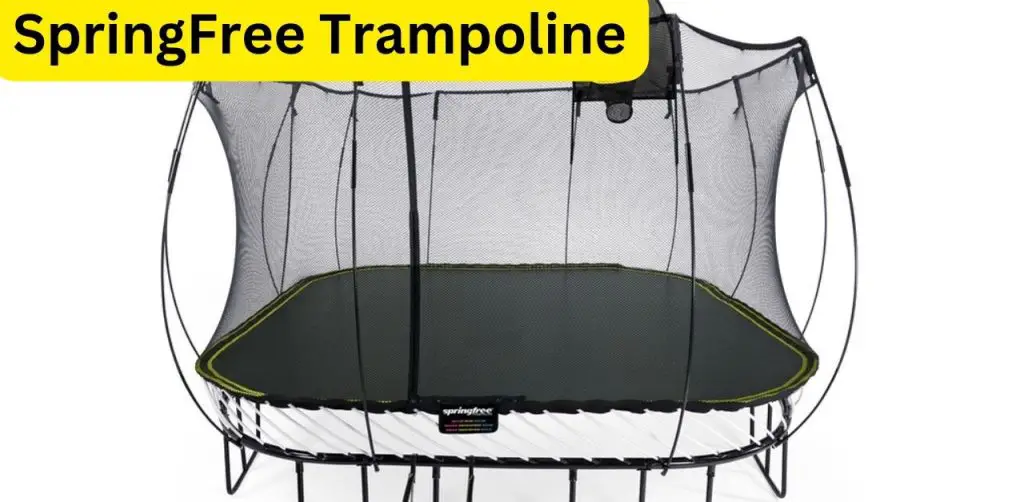
Springless trampolines are a newer type of trampoline that do not use traditional springs. Instead, they use a system of rods or bands to provide bounce. Springless trampolines are safer and more durable than traditional trampolines, but they are also more expensive.
Traditional trampolines use metal springs to provide bounce. While they are less expensive than springless trampolines, they can be dangerous if the springs are not covered or if they break.
Weight Limits:
The weight limit of the trampoline is another important factor to consider. The weight limit will determine how many jumpers can use the trampoline at once and how much weight the trampoline can support.
It’s important to choose a trampoline with a weight limit that is appropriate for the jumpers who will be using it. If the weight limit is exceeded, the trampoline could become unstable and dangerous.
Available Space in your Yard:
Finally, you need to consider the available space in your yard before buying a trampoline. Trampolines come in a variety of sizes, so it’s important to measure the available space in your yard and choose a trampoline that will fit comfortably.
It’s also important to consider the surrounding area. You should make sure that there is enough space around the trampoline for jumpers to safely land and that there are no obstacles, such as trees or buildings, nearby.
Additionally, you should make sure that the ground is level and free of rocks, roots, or other hazards. A level surface will ensure that the trampoline is stable and reduce the risk of injury.
Different Types of Trampolines
Trampolines are a popular form of entertainment and exercise, and they come in a variety of shapes and sizes. In this article, we’ll explore the different types of trampolines available, their advantages and disadvantages, and their costs.
Round Trampolines:
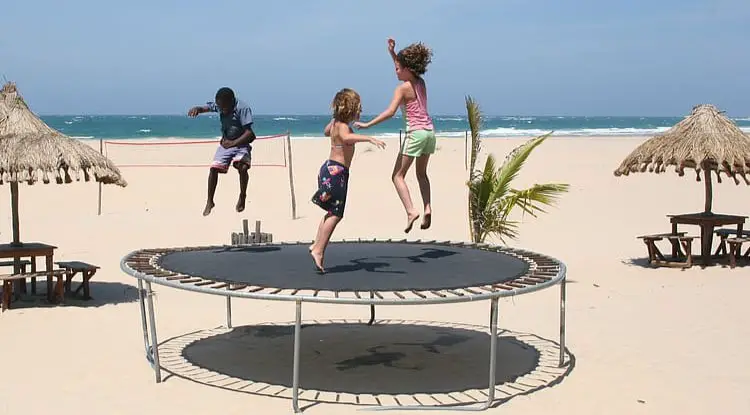
Round trampolines are the most common type of trampoline. They are typically between 8 and 16 feet in diameter and are often the most affordable option. Round trampolines provide a consistent bounce and are great for beginners and younger children.
Advantages:
- Round trampolines are the most affordable type of trampoline.
- They provide a consistent bounce and are great for beginners and younger children.
- They are often easier to set up and install than other types of trampolines.
Disadvantages:
- The bounce on round trampolines can be unpredictable if more than one jumper is using the trampoline at the same time.
- The shape of the trampoline can make it difficult to do certain tricks or movements.
- They often have a lower weight limit than other types of trampolines.
Cost:
Round trampolines are typically the most affordable option, with prices ranging from around $200 to $1,000 depending on the size and features.
Rectangle/Square Trampolines:
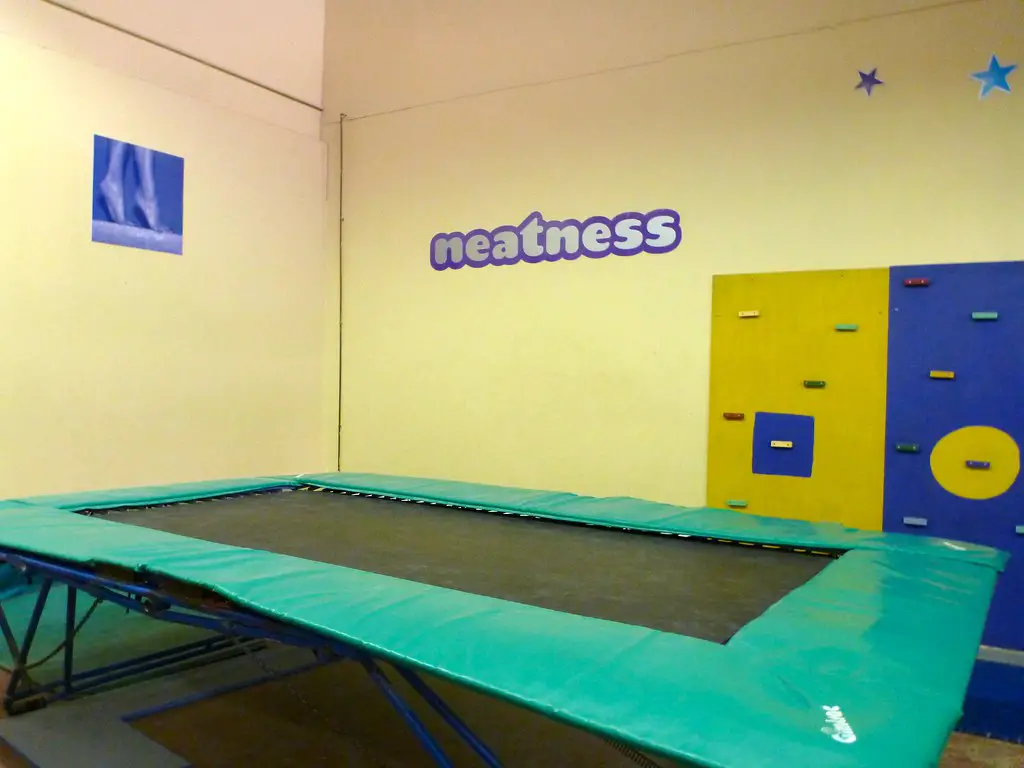
Rectangle and square trampolines are less common than round trampolines, but they are becoming increasingly popular. They provide a more consistent bounce than round trampolines and are great for advanced jumpers who want to do more advanced tricks and movements.
Advantages:
Rectangle and square trampolines provide a more consistent bounce than round trampolines.
They are great for advanced jumpers who want to do more advanced tricks and movements.
They often have a higher weight limit than round trampolines.
Disadvantages:
- Rectangle and square trampolines are often more expensive than round trampolines.
- They can be more difficult to set up and install than round trampolines.
- They require more space in your yard than round trampolines.
Cost:
Rectangle and square trampolines are often more expensive than round trampolines, with prices ranging from around $600 to $2,000 depending on the size and features.
Oval Trampolines:
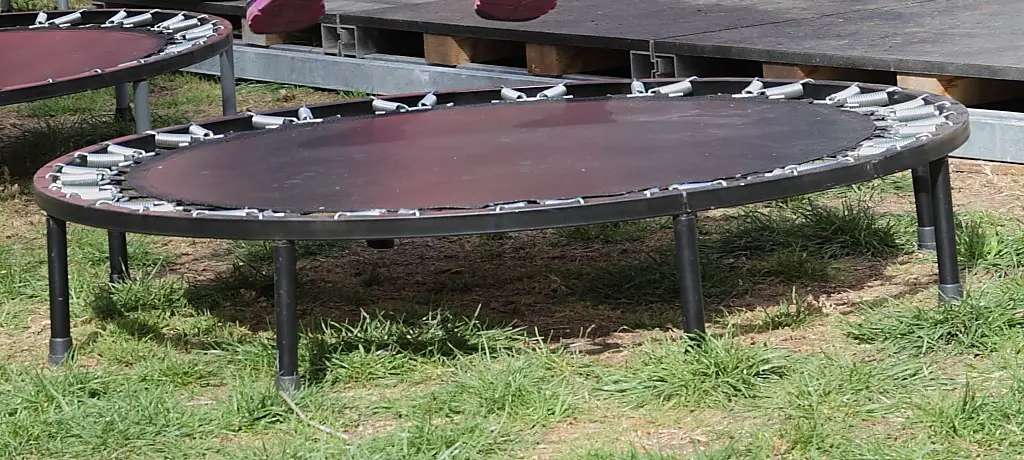
Oval trampolines are a newer type of trampoline that combines the best features of round and rectangle trampolines. They provide a consistent bounce like rectangle trampolines, but they have a more forgiving bounce area like round trampolines.
Advantages:
- Oval trampolines provide a consistent bounce like rectangle trampolines.
- They have a more forgiving bounce area like round trampolines.
- They often have a higher weight limit than round trampolines.
Disadvantages:
- Oval trampolines can be more expensive than round trampolines.
- They require more space in your yard than round trampolines.
- They may be more difficult to set up and install than round trampolines.
Cost:
Oval trampolines can be more expensive than round trampolines, with prices ranging from around $800 to $2,500 depending on the size and features.
Octagon or Polygon Trampolines:
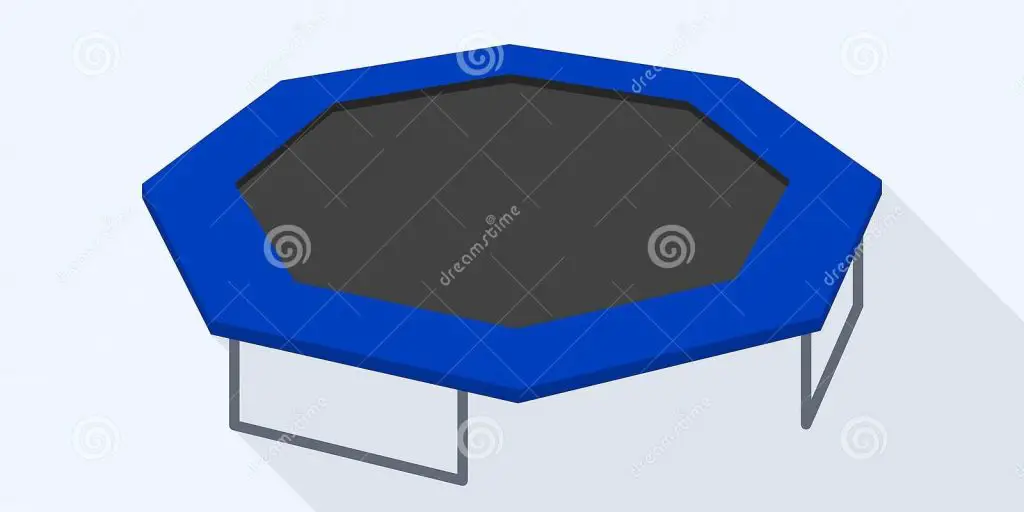
Octagon or polygon trampolines are another type of trampoline that is becoming increasingly popular. They provide a unique shape that allows for more jumping space and are great for advanced jumpers who want to do more advanced tricks and movements.
Advantages:
- Octagon or polygon trampolines provide a unique shape that allows for more jumping space.
- They are great for advanced jumpers who want to do more advanced tricks and movements.
- They often have a higher weight limit than round trampolines.
Disadvantages:
- Octagon or polygon trampolines can be more expensive than round trampolines.
- They require more space in your yard than round trampolines.
- They may be more difficult to set up and install than round trampolines.
Cost:
Octagon or polygon trampolines can be more expensive than round trampolines, with prices ranging from around $700 to $2,500 depending on the size and features.
Features to Look for When Buying a Trampoline
If you’re in the market for a trampoline, it’s important to consider the features that are most important to you. Here are some key features to look for when buying a trampoline:
Durability:
One of the most important features to consider when buying a trampoline is its durability. A durable trampoline will be able to withstand the wear and tear of frequent use and will last longer than a less durable model.
Look for trampolines that are made with high-quality materials and that have a solid frame and sturdy springs.
Springs:
The springs of a trampoline are what provide the bounce, so it’s important to choose a trampoline with high-quality springs. Look for trampolines with heavy-duty, rust-resistant springs that are designed to withstand repeated use over time. Some trampolines come with spring covers to protect the springs from rust and other damage.
Frame:
The frame of a trampoline is what holds everything together and provides stability. Look for trampolines with frames made from high-quality materials like galvanized steel, which is durable and rust-resistant. A well-constructed frame will also help prevent the trampoline from tipping over or collapsing during use.
Trampoline Mats:
The trampoline mat is what the jumper lands on, so it’s important to choose a mat that is durable and able to withstand the weight and impact of jumping. Look for mats made from high-quality materials like polypropylene or PVC, which are designed to resist tears and punctures.
It’s also important to choose a mat that is the right size for your trampoline and that is designed to fit securely in place.
Padding:
Trampoline padding is designed to protect the jumper from the frame and springs. Look for trampolines with thick, high-quality padding that is made from durable materials like foam or PVC. The padding should be able to withstand the wear and tear of frequent use and should be designed to stay in place during jumping.
Safety Enclosure:
A safety enclosure is a net that surrounds the trampoline and prevents jumpers from falling off. Look for trampolines with safety enclosures that are made from high-quality materials like mesh or nylon.
The enclosure should be securely attached to the frame and should be designed to prevent jumpers from getting tangled in the netting.
Weather Cover:
A weather cover is designed to protect your trampoline from the elements when it’s not in use. Look for weather covers that are made from durable materials like PVC or polyester and that are designed to fit securely over your trampoline. A well-made weather cover will protect your trampoline from rain, snow, and other weather-related damage.
Trampoline Accessories:
Finally, consider the accessories that come with your trampoline. Some trampolines come with accessories like ladders, basketball hoops, or anchor kits. Look for trampolines that come with accessories that are designed to enhance your jumping experience and that are made from high-quality materials.
Trampoline Safety
Trampolines are a fun way to get some exercise and enjoy the outdoors, but they can also be dangerous if not used properly. In fact, trampoline injuries are more common than you might think. Here’s what you need to know about trampoline safety:
Most Common Trampoline Injuries:
The most common trampoline injuries include sprains, fractures, and head injuries. These injuries can be caused by falls, collisions with other jumpers, or getting caught in the springs or frame of the trampoline.
How do Trampoline Injuries happen?
Trampoline injuries can happen in a variety of ways. Jumpers can fall off the trampoline or collide with other jumpers, which can result in fractures, sprains, or head injuries. Jumpers can also get caught in the springs or frame of the trampoline, which can cause lacerations or fractures. In some cases, the trampoline itself can malfunction or collapse, which can cause serious injuries.
Liability:
If someone is injured on your trampoline, you could be held liable for their injuries. This means that you could be responsible for paying their medical bills and other expenses related to their injury.
In some cases, you could even be sued for damages. It’s important to understand the potential liability risks associated with owning a trampoline and to take steps to minimize those risks.
How to Avoid Trampoline Injuries and Lawsuits?

The best way to avoid trampoline injuries and lawsuits is to take steps to ensure that your trampoline is used safely. Here are some tips:
Always supervise jumpers: Make sure that someone is supervising jumpers at all times to ensure that they are using the trampoline safely.
Limit the number of jumpers: Only allow one or two jumpers on the trampoline at a time to reduce the risk of collisions.
Use a safety enclosure: A safety enclosure is a net that surrounds the trampoline and prevents jumpers from falling off. Use a safety enclosure to reduce the risk of falls.
Use padding: Use padding to cover the springs and frame of the trampoline to reduce the risk of injuries from collisions or getting caught in the springs.
Set rules: Set rules for using the trampoline, such as no flips or somersaults, and make sure that all jumpers follow those rules.
Inspect your trampoline regularly: Inspect your trampoline regularly to ensure that it is in good condition and that all of the parts are functioning properly.
By following these tips, you can help ensure that your trampoline is used safely and that you minimize the risk of injuries and lawsuits. Remember, trampolines can be fun, but they can also be dangerous if not used properly.
Take the necessary precautions to keep yourself, your family, and your friends safe while using your trampoline.
Installation and Maintenance
Installing a trampoline can be a challenging process, but with the right tools and some basic knowledge, it can be done. Here’s what you need to know about the installation process and maintenance of your trampoline:
Installation Process:
The installation process for a trampoline varies depending on the type of trampoline you have. Generally, the process involves assembling the frame, attaching the springs, and installing the trampoline mat.
Here are some general steps to follow:
Choose a location: Choose a flat and level area for your trampoline. Make sure there is enough space around the trampoline for jumpers to land safely.
Assemble the frame: Follow the instructions that came with your trampoline to assemble the frame. Make sure all of the parts are securely fastened.
Attach the springs: Attach the springs to the frame and the trampoline mat. Make sure the springs are evenly spaced and tightly secured.
Install the trampoline mat: Install the trampoline mat by attaching it to the springs. Make sure the mat is evenly distributed and centered on the frame.
Attach the safety enclosure: If your trampoline came with a safety enclosure, attach it to the frame. Make sure the enclosure is securely fastened and in good condition.
Maintenance Tips:
To keep your trampoline in good condition and ensure its longevity, you’ll need to perform regular maintenance.
Here are some tips:
Clean the trampoline: Use a soft brush and mild soap to clean the trampoline mat, frame, and safety enclosure. Rinse thoroughly with water and allow to dry completely before using.
Inspect the trampoline regularly: Inspect the trampoline regularly for any signs of wear and tear. Look for loose springs, damaged matting, and rust on the frame.
Check the springs: Check the tension on the springs regularly. Make sure they are evenly spaced and properly tensioned.
Keep the trampoline covered: Use a weather cover to protect the trampoline from the elements when not in use. This will help prevent rust and other damage.
How to keep your Trampoline in Good Condition:
To keep your trampoline in good condition and ensure its longevity, follow these tips:
Use it properly: Make sure jumpers use the trampoline properly and follow any rules you’ve set.
Limit the number of jumpers: Only allow one or two jumpers on the trampoline at a time to reduce the risk of collisions and damage to the trampoline.
Remove shoes: Remove shoes before jumping on the trampoline to prevent damage to the mat.
Keep pets away: Keep pets away from the trampoline to prevent damage to the mat and frame.
Store it properly: When not in use, store the trampoline in a dry and protected area. This will help prevent rust and other damage.
By following these installation and maintenance tips, you can keep your trampoline in good condition and ensure its longevity. Remember to inspect your trampoline regularly, clean it regularly, and store it properly to prevent damage and extend its lifespan.
FAQs
Q:1 What size trampoline should I buy?
The size of your trampoline should depend on the size of your yard and the number of people who will be using it. Round trampolines typically range from 8 to 16 feet in diameter, while rectangular trampolines can be up to 15 feet in length. Consider a larger size if you have multiple users or want to perform more advanced tricks.
Q:2 What is the weight limit for a trampoline?
Trampolines usually have weight limits ranging from 200 to 400 pounds. It’s important to consider the weight of all potential users, including adults and children, when selecting a trampoline with an appropriate weight capacity.
Q:3 What safety features should I look for in a trampoline?
Look for trampolines with sturdy frames, safety net enclosures, padding on the springs and frame, and a weight limit that can accommodate all users. Consider additional safety features like anchor kits, ladder locks, and weather-resistant materials.
Q:4 Should I buy a round or rectangular trampoline?
Round trampolines are more common and better suited for recreational jumping and multiple users. Rectangular trampolines offer more bounce and are better for gymnastics and tricks.
Q:5 What type of trampoline mat should I get?
Look for trampoline mats made of durable materials like polypropylene or permatron. Choose mats with at least 6 rows of stitching for added strength and longevity.
Q:6 How much should I expect to spend on a trampoline?
Trampolines can range from a few hundred dollars to over a thousand dollars depending on the size, features, and brand. Consider your budget and what features are most important to you when selecting a trampoline.
Q:7 Do I need professional installation for my trampoline?
Professional installation is recommended to ensure your trampoline is properly assembled and installed for optimal safety and performance. However, some trampolines come with easy-to-follow instructions for at-home assembly.
Conclusion:
In conclusion, purchasing a trampoline can be a fun and exciting addition to your backyard, but it’s important to consider a variety of factors before making your purchase. Some key factors to consider include the age and skill level of the jumpers, the size and shape of the trampoline, and the available space in your yard.
There are different types of trampolines available, including round, rectangle/square, oval, and octagon/polygon trampolines, each with their own unique features and benefits.
When selecting a trampoline, it’s important to consider features such as durability, springs, frame, trampoline mats, padding, safety enclosure, weather cover, and accessories.
Safety should always be a top priority, and it’s essential to take precautions to avoid common trampoline injuries and potential lawsuits. This includes proper installation and maintenance of your trampoline, as well as following safety guidelines for use.
Overall, by considering all of these factors and taking necessary safety precautions, you can ensure a fun and safe experience for all jumpers on your trampoline.
We hope this guide helped you understand what to look for when buying a trampoline. If you have any questions, please feel free to ask them in the comments section below!

